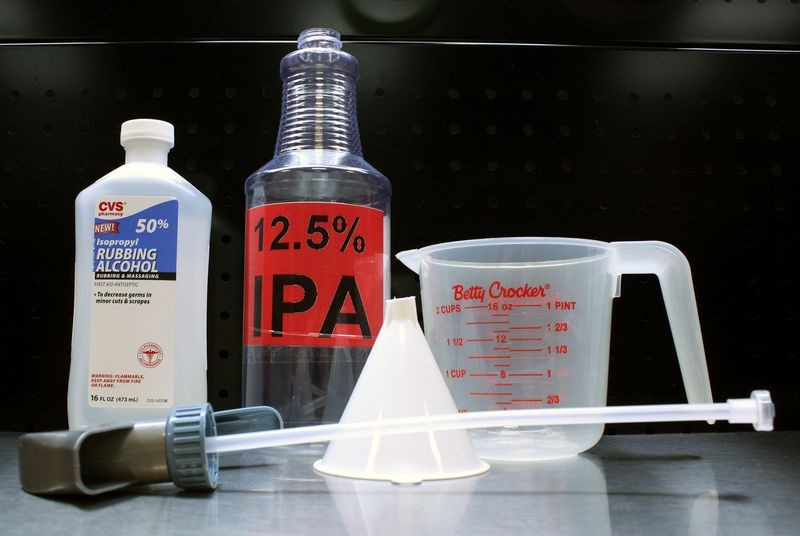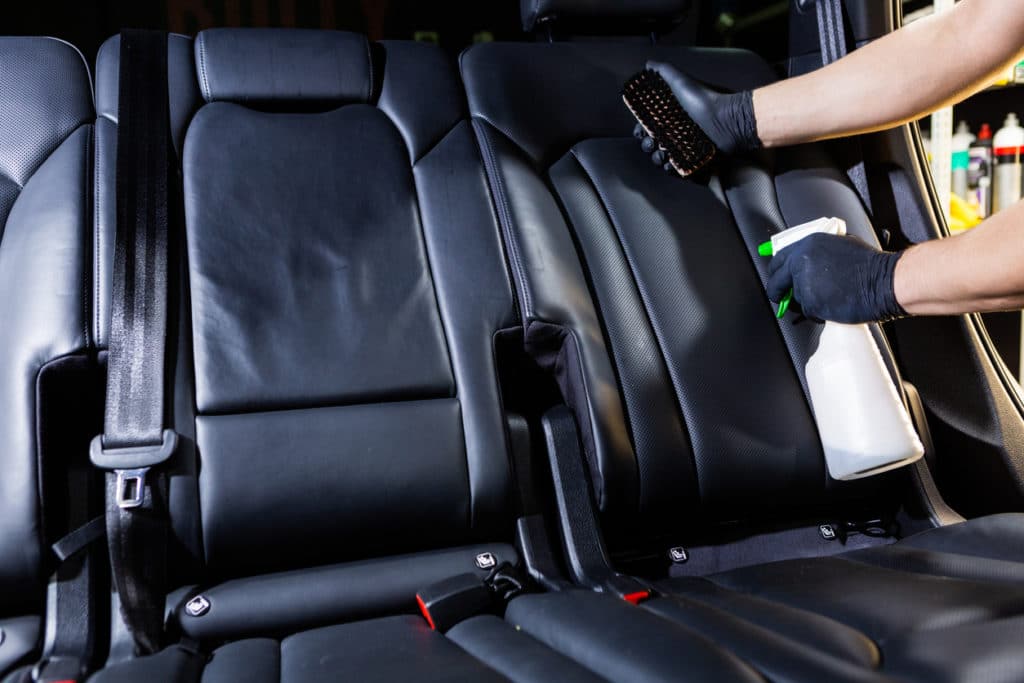Rubbing Alcohol On Car Paint: Yes Or No
Does rubbing alcohol on car paint seem like a good idea on your muddy car days? Let’s find the answer with Car From Japan right away.
People may say that for sturdy and hard-to-clean mud points on car paint, you always manage to use heavy substances to rub them off for good. And one of the most heavy-mentioned ones is alcohol. You may not notice, but every car detailing professional probably has a spray bottle full of isopropyl rubbing alcohol.
It may seem strange considering there are so many other, more expensive solvents and cleaners on the market. However, many experienced details swear by their familiar old-fashioned rubbing alcohol. Specialized rubbing alcohol is an effective washing solution to remove thick grease, and heavy grimes. Aside from being a necessary substance to prepare vehicle surfaces for fresh paint, vehicle wraps, and tint layers, it can also be used to remove old wax or sealant layers from car paint.
Rubbing Alcohol On Car Paint: The Breaking Down
If you are now wondering if rubbing alcohol will destroy your car paint, the answer is no. But it also depends on the ratio of the substance you use.
In detail, the rubbing alcohol will not damage the paint layers as long as you dilute it properly between 10% and 15%. This means that using a ratio of 10%-15% rubbing alcohol to 85%-90% water mixture will not damage your car paint. And it is also highly effective in removing grease, oil, and other stubborn stains from your exterior coat.
With that in mind, you should never use full-strength rubbing alcohol, as doing so will dissolve the protective clear coat. In addition, it will be more secure and safe if you remember some safety notices before applying any alcohol-related solution to the paint. You will never want to use the rubbing alcohol on car paint purely, madly, deeply with full rubbing strength, or apply it any wrong way. Because any mistake may leave a very bad taste in your morning driving sense with some highlighted marks on your car paint, including the tattooed damages that may be very hard to remove.
Moreover, alcohol has increased ethyl concentration. And that is why you need to take caution and not use rubbing alcohol on freshly painted cars because ethyl can eat through paint severely, pushing the car paint to fade at a fast speed. Therefore, you should dilute the rubbing alcohol at all times before applying it to your car surfaces.
The Proper Way To Dilute Rubbing Alcohol

Roll up your sleeves and start the project with an alcoholic dilution ratio of 10 to 15%. Every expert may recommend sticking to only 10% unless you inevitably endure some dense filth or thick grease that is hard to come off with the weaker concentration of rubbing alcohol.
In this upcoming guided process, you will not learn to find the alcohol diluted on stock stands. Instead, you will learn how to dilute the alcohol yourself, at home, with pure water. Depending on the concentration of isopropyl alcohol, you can take some mathematical equations to decide the amount of needed water.
We will now show you an easy formula to achieve a 12.5% to 13% concentration of alcohol in a mixed can:
- Prepare 946 millimeters or 32 ounces quart-sized container
- Fill the container quarter way with rubbing alcohol activated at 50% strength.
- Cover the container with a rubbing alcohol ‘layer’ again with water.
The new-created lower-concentrated mixture is safe to use on your delicate car paint without damaging or blemishing it.
Using Rubbing Alcohol On Car Paint For The Right Detailing Tasks
The rubbing alcohol delivers a broad range of applications and benefits even when you want to do things at home or in complicated detailing tasks. For home-based projects, rubbing alcohol is commonly used as a disinfectant and cleaning agent.
You know you can always use this alcohol in higher concentrations to kill bacteria on car surfaces and wipe out the dirty substance. On the other hand, when cleaning or detailing your car, diluted rubbing alcohol can be as effective as other cleaning solutions or substances on the market.
Below are some safe and helpful uses of rubbing alcohol on car paint for your reference
Removing thick sealant or wax from painted car surfaces
Rubbing alcohol is a cleaning solution that can be used to remove non-polar compounds from surfaces. That is why when you want to remove wax, sealant, or grease from your car’s paint or coat, rubbing alcohol is always a good choice.
Even though car wash soaps clean most non-polar compounds a few times, you might also need isopropyl alcohol. It’s a great agent when it comes to cleaning and polishing your car.
Removing haze from windows and windshields
If you notice a waxy windshield quite often, you can also consider using rubbing alcohol (Isopropyl alcohol). Though people often choose the common water wash way, it sometimes does not leave the glass squeaky clean and clear.
For the detailing process, mix 1:1 rubbing alcohol and water and spray it on your car’s window. Let it sit for a minute, then wipe it with a microfibre cloth.
Dissolving window’s frost
Scraping off frost from your car’s window is not just unexciting but also time-consuming. However, if you spray some rubbing alcohol on the frost top layer and wipe it off afterward, dirt or grease may speed up and come down quite smoothly.
>> See More: The Quickest Way To Defrost Your Car With The Defroster
Restoration of the headlight lens
Car owners who are longer want to use DIY sandpaper alternatives or headlight lens restoration kits can switch to rubbing alcohol. It does the job smoothly, within no time, and is also more economical than other options.
Removing sticker residue
Stickers and decals are a common way to personalize a car, and they can be used to make a car look unique without any hesitation. However, taking off these stickers can be painful and annoying after some time.
While the removing process alone is rigorous, it further leaves behind tuff and sticky residue. If you use rubbing alcohol for the process, it will kill the pain and trouble.
To remove old car stickers, apply a layer of alcohol over the area. After a minute or two, remove the sticker, and it will come out easy and clean. Or if you already have snatched the sticker and spot some sticky residue left behind, rub it off with some Isopropyl.
Disinfecting the car’s interior
Cleaning and disinfecting a car’s interior isn’t easy as it seems. Disinfecting the seat belts, steering wheel, door handle, and nooks & corners is crucial, especially when the world is fighting against a deadly virus. And, for doing this deed quick and easy, take a microfibre cloth, pour over some rubbing alcohol and wipe your car’s interior.

Cleaning the car’s top layer before attaching a wrap (or film)
You may notice that every detailing expert will take great care when applying any surface guards, ensuring to remove all the dirt, dust, and scratches.
Similarly, preparing the surface is one of the most vital processes before tinting your car window. The film will be finished with a smooth and even finish, which will keep it clean from dirt, dust, or other foreign particles. Along with the isopropyl, remember to wet the surface enough for sticking the film while you smooth it out.
Using Rubbing Alcohol On Car Paint: The Ultimate Notices
After taking notice of the dilute ratio and the proper use of rubbing alcohol, here are some things to consider.
- Avoid applying alcohol over your car paint and use it only when it is due time.
- Never use undiluted isopropyl all over the car, from the top to the bottom.
- According to car detailing specialists, the safe point of alcohol usage for any car wash type is the ratio of 10% to 15% alcohol mixed in water. So once you have started your project, avoid making the alcohol-water combination exceed 25%.
- Do not use alcohol on too old or newly-done paint coating layers.
- Avoid using a too-hard rub or being vigorous. Also, you should not apply any stress from washing actions when rubbing alcohol is poured into the car. It is an effective self-activated mixture. So you should not intervene with lots of force, and let the alcohol finish its job.
- Consider diluting rubbing alcohol with purified water if likely.
- Avoid letting any area of your car exterior and interior make contact or dip deep in a mixture of not-yet-diluted high-ratio rubbing alcohol.
- Avoid giving rubbing alcohol any chance to contact your car’s technical or electrical parts.
- Rubbing alcohol is a flammable cleaning solution, so you should use it near the battery, engine, or other combustible materials to avoid creating any unexpected spark.
- Find the shade to park your car to protect the car parts from the severe heat and direct sunlight when using Isopropyl alcohol to wash.
Wrapping Up On Rubbing Alcohol On Car Paint
A bottle of isopropyl alcohol to add to the car washing mixture may seem small, but when it comes to usage, you may forget the count. Rubbing alcohol on car paint or another way is also a magical solution.
From detailing the outside to disinfecting the inside, rubbing alcohol comes with several benefits. But as you know, 100%-strength isopropyl alcohol can cause unpleasant and extreme results on your car coat. So every time you pick up a bottle of rubbing alcohol, remember our notices on how to use it safely with the recommended dilution ratio.
For more car maintenance tips, follow Car From Japan today.














